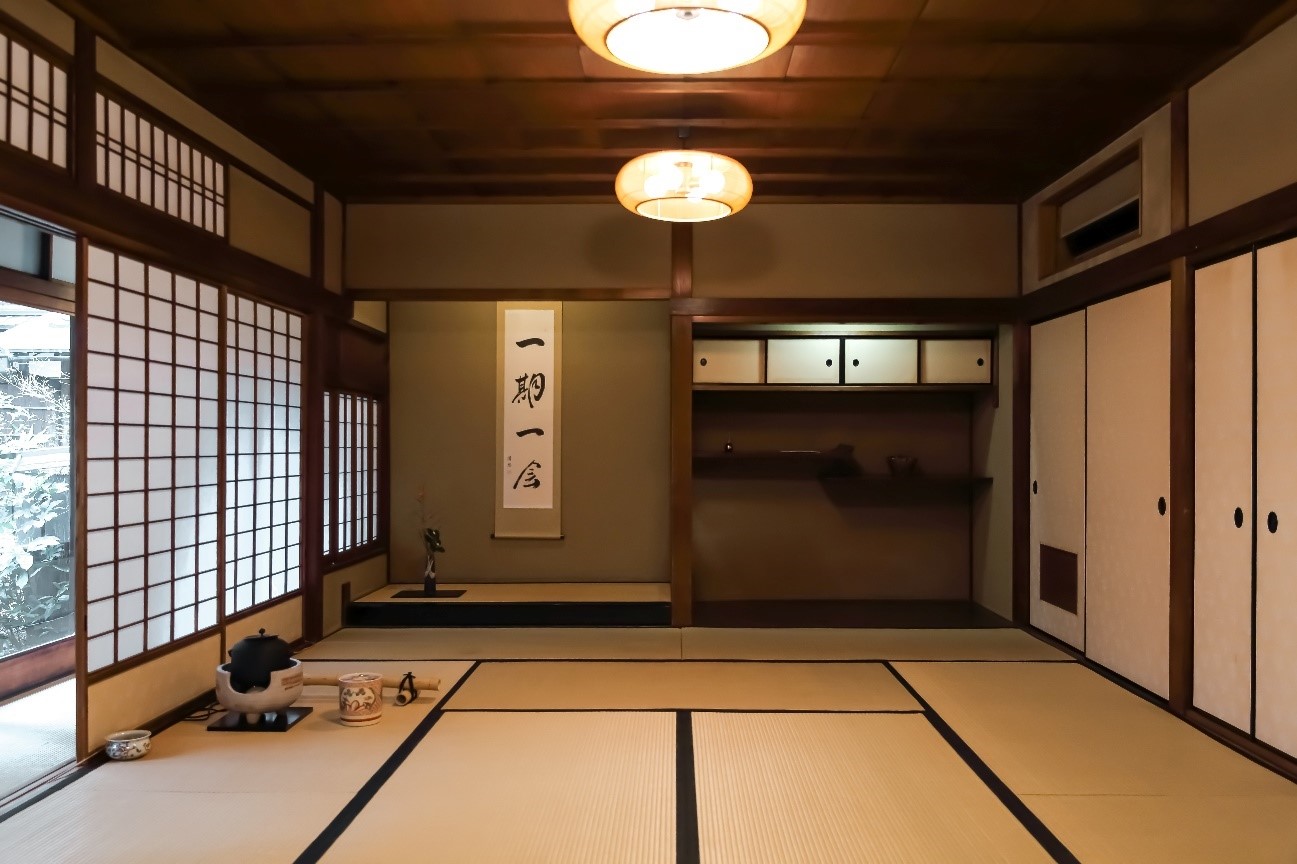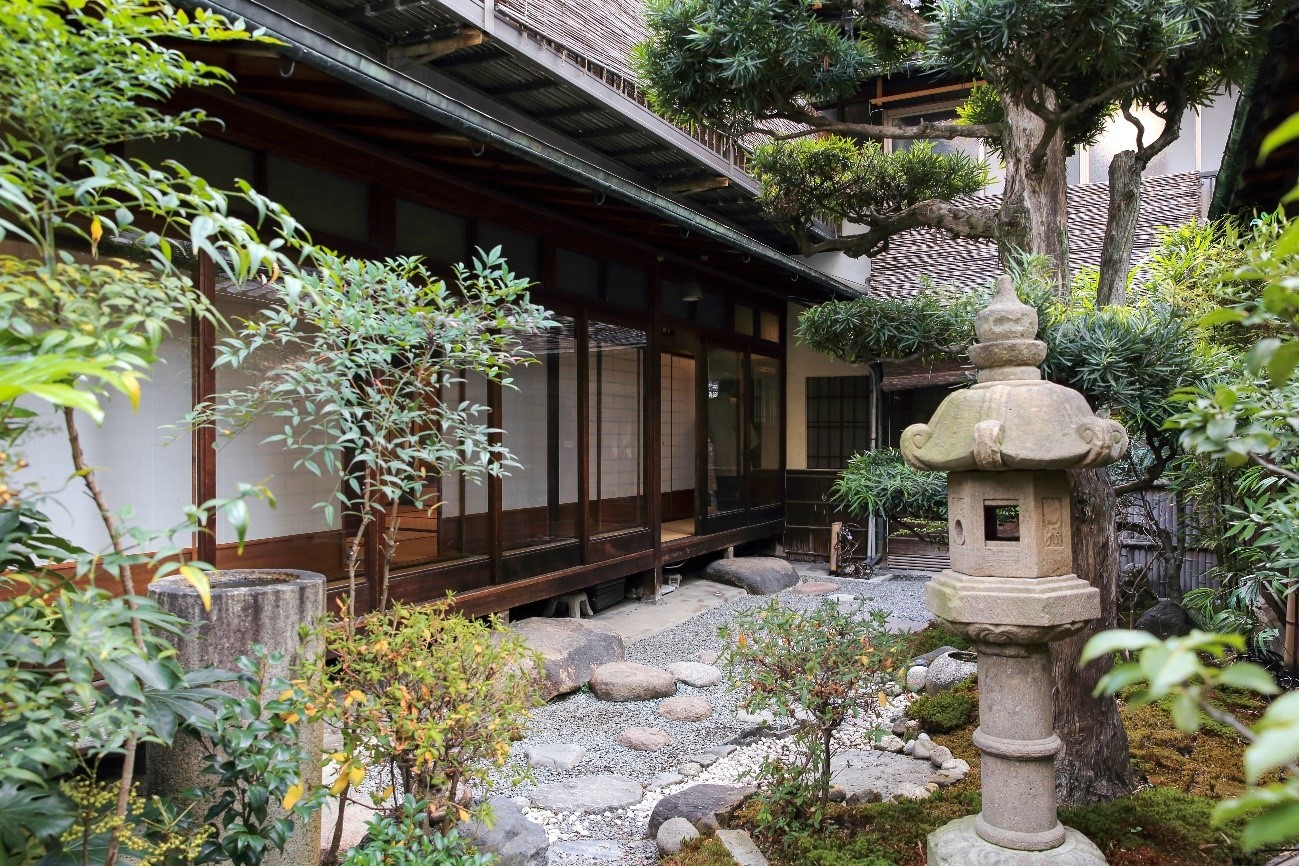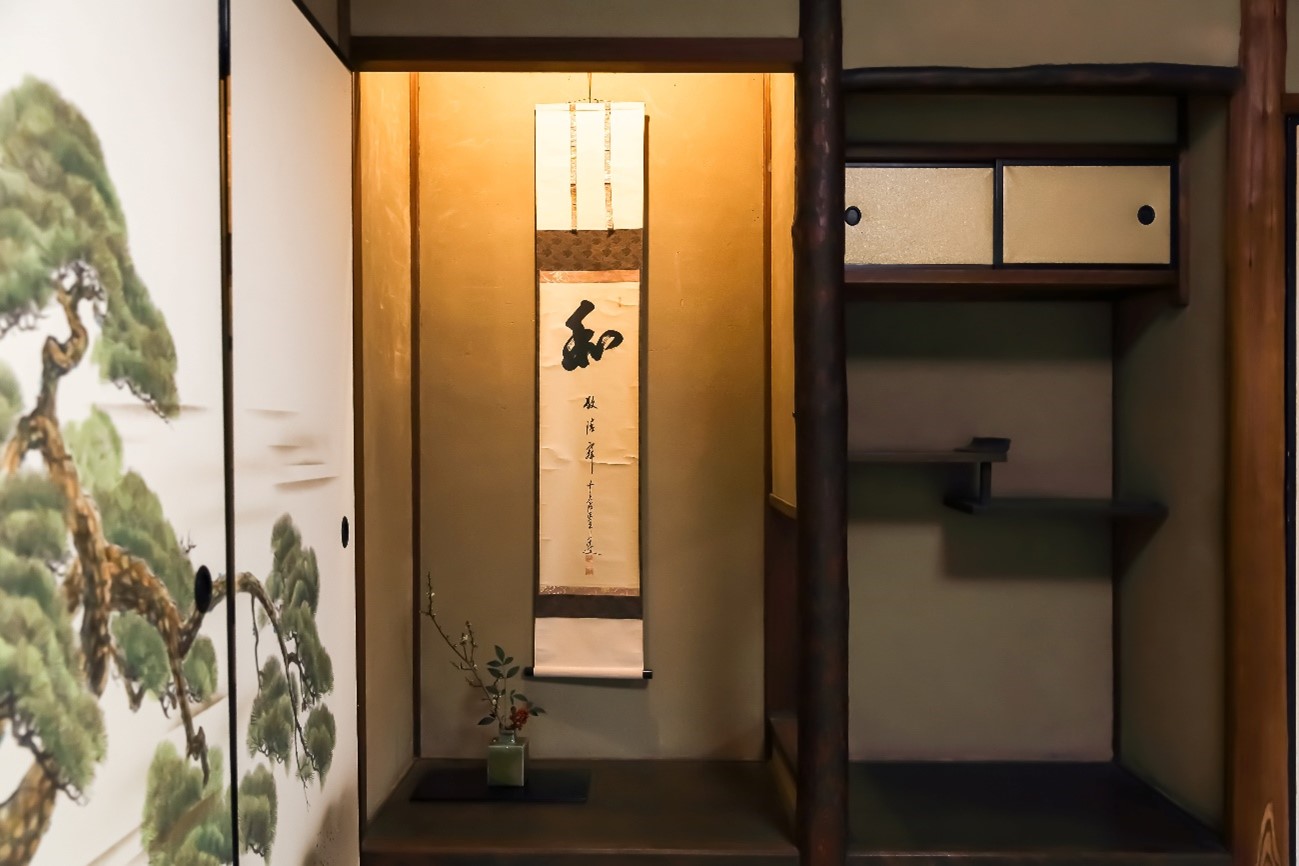
The Mizutani Residence, which was once considered to be demolished, found a tenant through the Kyoto City Kyo-machiya Matching Program*. Mr. Sho-ichiro Mizutani, the owner of the townhouse, tells us how he came to use the program and his thoughts at the time.
*Kyo-machiya Matching Program
A program provided by the City of Kyoto in cooperation with experienced Kyo-machiya experts who are registered with the City, proposing an owner of a Kyo-machiya renovation, utilization, and matching with a new rent/owner who wishes to acquire or utilize a townhouse.
Profile
A large Kyo-machiya townhouse with a teahouse and storehouses, which lies on the Gokomachi-dori Street. The main house dates from the early to mid-Meiji era. At present, it is utilized as a facility for experiencing Japanese culture and is popular among overseas visitors. It is a designated Kyo-machiya townhouse under the city’s ordinance on Kyo-machiya and a designated architecture for historic landscape.
A large Kyo-machiya townhouse in the city center, dating to the Meiji era

|
| The large tatami room on the first floor is spacious. Seasonal flowers and a hanging scroll are placed in the tokonoma alcove. |
A place filled with precious memories from childhood
The Kyo-machiya townhouse, where Mr. Mizutani lived from the time he was an elementary school student until he started living alone, is filled with memories of those days. His family used to have parties to enjoy viewing cherry blossoms under the cherry tree in the garden, he as an elementary school boy was a bit proud of his large house, and his friends came to his house every day to stay overnight when he was a university student.

|
| Visitors can enjoy seasonal plants in the garden. |
In order to preserve such townhouse filled with various memories for the future, Mr. Mizutani consulted with one of his friends with knowledge of the real estate business on renting the house to someone who would take good care of it. However, he was unable to find any and was advised to convert it to a parking lot. When Mr. Mizutani himself started to think that there was no way but to dismantle the house, he found a notice in the mailbox.
One notice, which saved the townhouse from demolition
It was the notice to inform that his townhouse had been designated as the one under the city’s ordinance on Kyo-machiya. Once designated, it is required to file a notification of demolition at least a year prior to the commencement of demolition work. This is one of the initiatives undertaken by the City of Kyoto and a program to induce an owner of a townhouse to reconsider demolition and consider preserving it instead. When Mr. Mizutani visited the City Hall to obtain further details of the program, he was introduced to the “Kyo-machiya Matching Program.” Wishing to preserve his townhouse full of memories under the program, and he applied for the program. On the other hand, he submitted a notification of demolition at the same time because he was unable to make up his mind whether to utilize or demolish the house.

|
| The tokonoma alcove in the large tatami room on the second floor. It is fun to see each room with a different setting. |
The Kyo-machiya Matching Program to connect owners and tenants
At a later time, Mr. Mizutani met some people who wanted to rent the townhouse, but he was unable to find a good solution for utilization. This is because the townhouse with many rooms, as well as a tearoom and a garden was too big for a restaurant, which might require a major renovation to the interior. In September 2020, a successful match was made with a company, which manages facilities to offer workshops to experience Japanese culture such as tea ceremony, flower arrangement, and kimono dressing in traditional settings. The Kyo-machiya townhouse itself perfectly matched the company’s business to disseminate the Japanese culture for its characteristics such as the calm atmosphere and flexibility in dividing spaces with sliding doors.

|
| A view of a tea ceremony workshop in the tearoom. Beginners can join it at ease. |
“Not only the beauty of the garden but also the condition of the building show how much the house has been cherished. We felt that we also wanted to keep such Mr. Mizutani’s love towards the house and decided to rent the house,” says the owner of the company. Mr. Mizutani also says, “Thanks to the City, I was able to meet the good company and my house is preserved how it has been. I am very happy that the preservation was made in the best way.” In fact, Mizutani Residence is the first case of the Kyo-machiya Matching Program. Not only submitting the notification of demolition but also taking advantage of the Kyo-machiya Matching Program, Mr. Mizutani truly preserved the Kyo-machiya for the future.

|
| Roji tea garden which leads to the teahouse. Three large and small stone lanterns are placed. |
“Preserving a Kyo-machiya townhouse is very difficult, so I do not know what would happen to the next generation. However, for me personally, I love the Japanese atmosphere and I would like to preserve the townhouse as long as possible,” says Mr. Mizutani. He continues, “I was lucky to be the first case of the Kyo-machiya Matching Program and I hope there will be more people like me. I was driven by my passion towards preserving the townhouse where I grew up, and I think my desire and the City’s initiative matched in a good way and resulted in preserving the Kyo-machiya. I strongly recommend that those who are concerned about their own Kyo-machiya townhouses should contact the City for consultation.” Mr. Mizutani’s hope is conveyed to the tenant properly so that they utilize the townhouse with care and visitors can fully experience its charm. Mizutani Residence is the Kyo-machiya where such synergy is fostered.

